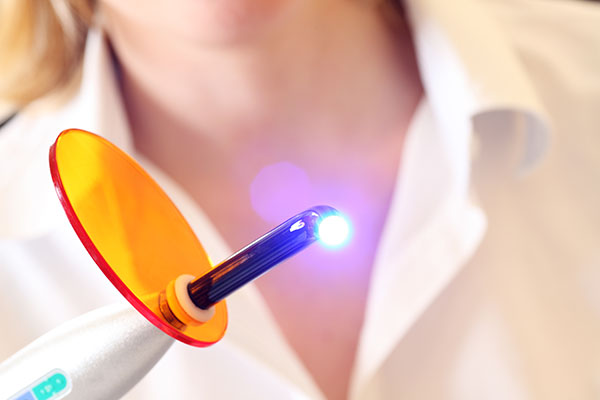What Is Laser Dentistry?

Laser dentistry involves the use of lasers to remove or transform hard or soft tissues during dental procedures. Although lasers were developed decades ago, its use in dentistry was not widespread until recently. In this article, you will learn about the types of lasers used in dentistry and the treatments where they may be applicable.
Types of Lasers
The lasers used in dentistry are soft tissue lasers and hard tissue lasers, and they both have unique applications.
Soft tissue lasers
According to the American Dental Association (ADA), the Food and Drug Administration in the United States has approved more than 20 applications of lasers in dentistry. The most common use of lasers is on soft tissues of the oral cavity such as the gums. The lasers used for such procedures include diode lasers, carbon dioxide laser, and Nd: YAG laser.
Lasers are useful for cutting and removing soft gum tissues, which makes them practical for dental procedures, such as gum reshaping for cosmetic purposes, and cutting down the gums around the tooth in a process called crown lengthening. In some cases, lasers are used to reduce gum tissue, loosen tight muscles in the mouth, treat cold sores or oral ulcers. Laser dentistry is also effective for periodontal disease treatment by eliminating the infected layer of the gum tissue surrounding the tooth and promoting regeneration of healthy gum tissues.
According to the American Association of Periodontology, it is hard to tell if laser dentistry treatment is more effective than conventional treatments of gum diseases. Laser dentistry treatment definitely has its advantages for soft tissues. Laser therapy reduces bleeding during and after surgeries, results in less discomfort (and therefore a minimal need for anesthesia), and minimizes swelling. In some cases, however, laser therapy may prolong healing and cause tissue discoloration.
Hard tissue lasers
Hard tissue lasers can cut through the hard tissues in the oral cavity, such as the teeth. This type includes the Er, CR: YSGG and Er: YAG lasers. These lasers are effective for removing tooth decay, prepare cavities for dental fillings, prep a tooth for root canal therapy, and abrade the tooth enamel to make fillings adhere to it.
Lasers created for hard-tissue procedures may minimize the need for sedation and lower the risk of overheating areas of the tooth such as the pulp (the tooth’s nerves). On the downside, hard tissue lasers can prolong the time required for treatment due to the accurate nature of laser cutting, and the results are sometimes inconsistent.
Applications of laser dentistry
Laser dentistry can be used in many dental treatments, including laser teeth whitening, placing dental restorations such as fillings and crowns, and detecting cavities. It is important to note that the ADA has not listed laser dentistry education as part of its accreditation requirements for dental education programs. This means that dentists must take additional training on using lasers through specialized programs or from manufacturers.
Final Note
Laser dentistry has its benefits when used for dental procedures. Patients who wish to try dental laser treatment will need to discuss with their dentist to know if the procedure is suitable for them.
Request an appointment here: https://familychoicedentistry.com or call Family Choice Dental at (505) 634-5657 for an appointment in our Albuquerque office.
Check out what others are saying about our services on Yelp: Read our Yelp reviews.
Related Posts
If your wisdom teeth have begun to emerge, it is time to speak to your dentist. When these teeth are impacted, they can have some serious effects on your oral health. It is important for you to understand the risks these teeth pose and the steps you should take. Your dentist can walk you through…
Teeth whitening remains one of the most popular cosmetic dental treatments. This treatment offers individuals the opportunity to enhance their smiles and boost their overall confidence. With numerous options available, two primary choices dominate the conversation: professional teeth whitening versus at-home whitening kits purchased over the counter. Both methods can brighten teeth, but there are…
Getting a smile makeover means getting at least one type of cosmetic dental treatment. You may want to improve your smile, but along with these treatments is the benefit of better oral health. Finding out more about this makeover can help you make informed decisions. Here are the details to consider about a smile makeover.The…
People often have wisdom teeth extraction performed when these teeth come in behind the second molars of the upper and lower jaw. Wisdom teeth appear between the ages of 17-25 and may crowd the other teeth, causing pain and possibly changing the bite of the teeth. Those who undergo an extraction often have questions about…
